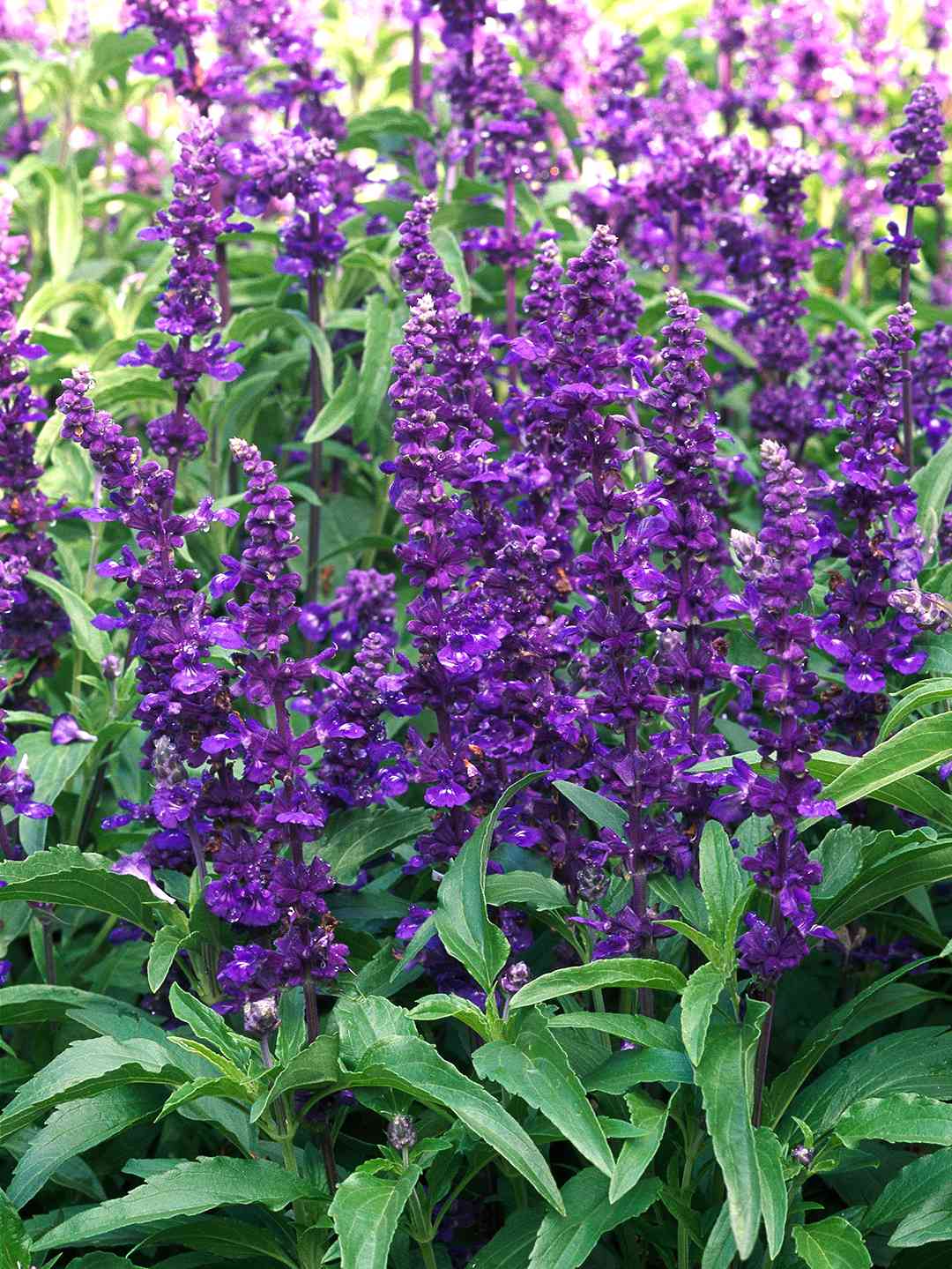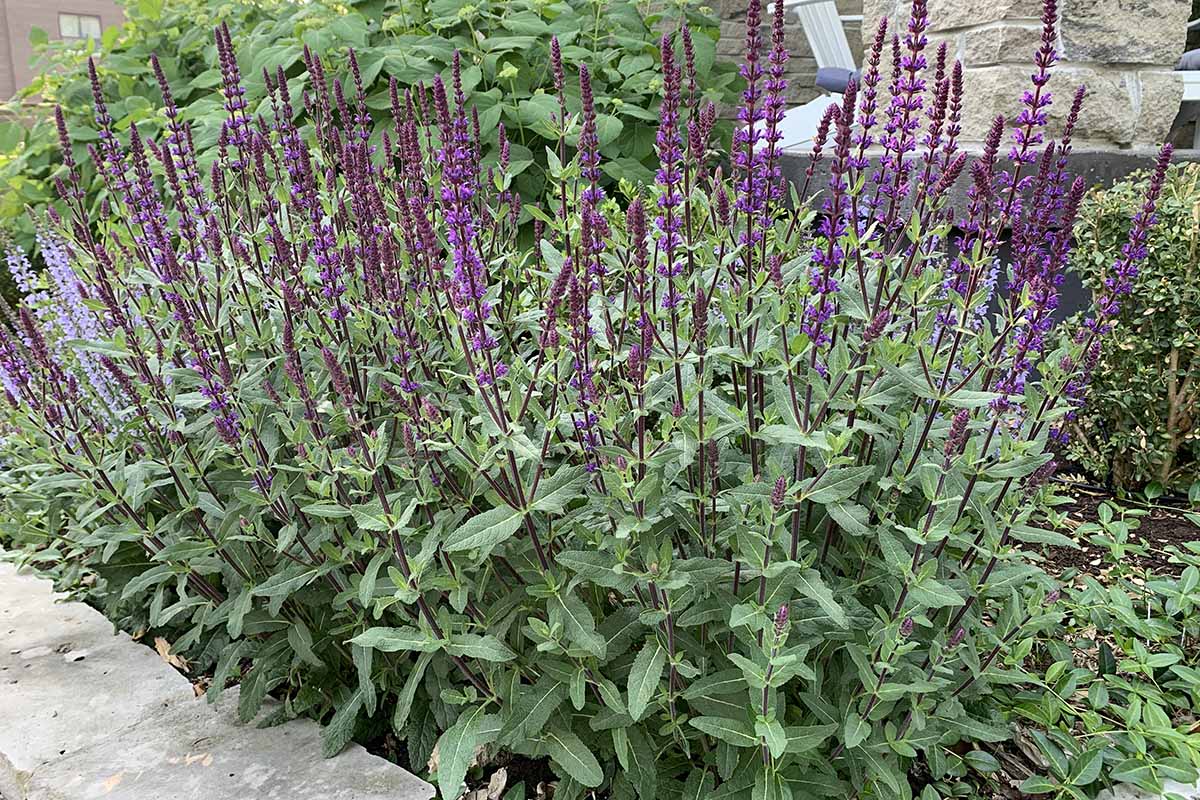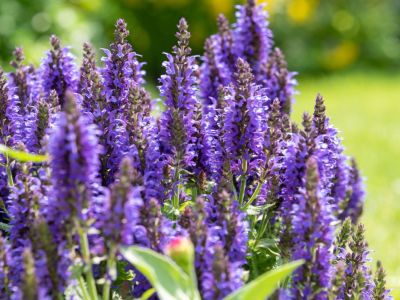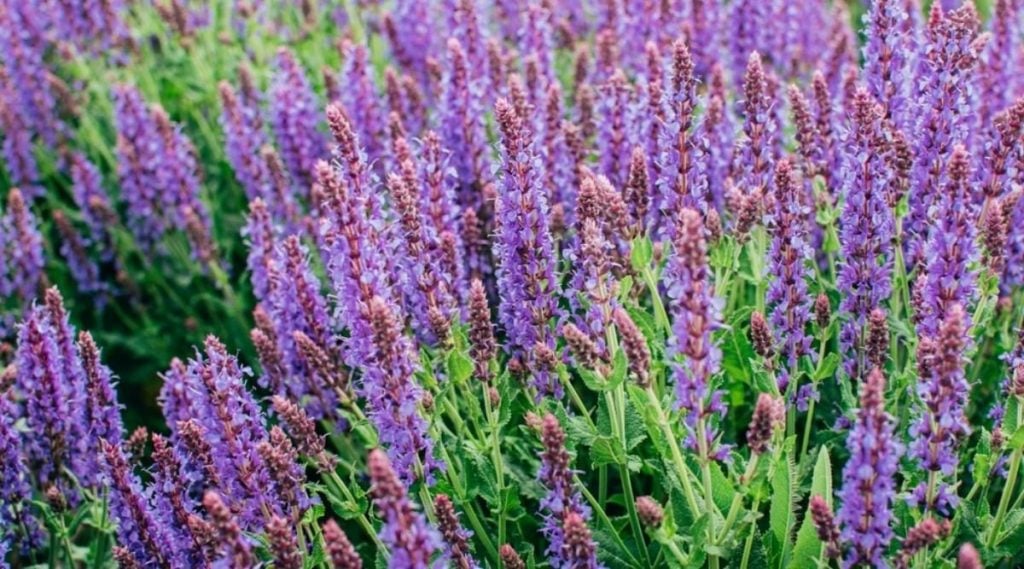Understanding the Life Cycle of Salvias
Salvias, also known as sages, are a popular choice among gardeners due to their vibrant flowers, fragrant foliage, and relatively low maintenance requirements. To maximize the lifespan of these beautiful plants, it’s essential to understand their life cycle. The life cycle of salvias typically consists of four stages: seed germination, seedling establishment, vegetative growth, and flowering.
Seed germination usually occurs within 1-3 weeks after sowing, depending on factors such as soil temperature, moisture, and light exposure. During this stage, it’s crucial to maintain consistent moisture levels and provide adequate light to promote healthy growth. Once the seedlings have established themselves, they enter the vegetative growth stage, characterized by the development of leaves, stems, and roots.
As salvias mature, they produce flowers, which can last anywhere from a few weeks to several months, depending on the variety and growing conditions. Understanding the life cycle of salvias can help gardeners better care for their plants and extend their lifespan. By providing optimal growing conditions, pruning, and fertilizing, gardeners can encourage healthy growth and promote a longer flowering period, ultimately answering the question of how long do salvias last.
For example, some salvia varieties, such as Salvia elegans, can live for several years if provided with proper care, including regular pruning and division. In contrast, annual salvias, like Salvia farinacea, typically complete their life cycle within a year, producing seeds for the next generation. By understanding the life cycle of salvias, gardeners can plan accordingly, ensuring they provide the best possible care for their plants and maximizing their lifespan.
In addition to understanding the life cycle, gardeners should also be aware of the factors that can impact the longevity of salvias, such as climate, soil quality, watering, and pruning. By optimizing these factors, gardeners can promote healthy growth, prevent common problems, and extend the life of their salvias. In the next section, we’ll explore the factors that affect the longevity of salvias and provide tips on how to optimize them.
Factors Affecting the Longevity of Salvias
Several factors can impact the lifespan of salvias, and understanding these factors is crucial to maximizing their longevity. Climate, soil quality, watering, and pruning are some of the key factors that can affect how long salvias last. By optimizing these factors, gardeners can promote healthy growth, prevent common problems, and extend the life of their salvias.
Climate is one of the most significant factors affecting salvia longevity. Salvias typically thrive in temperate climates with moderate temperatures and adequate moisture. Extreme temperatures, drought, or excessive rainfall can stress the plants, reducing their lifespan. Gardeners can mitigate the effects of climate by providing protection from extreme weather conditions, such as using row covers or bringing plants indoors during harsh winters.
Soil quality is another critical factor affecting salvia longevity. Salvias prefer well-draining soil with a pH between 6.0 and 7.0. Poor soil quality can lead to root rot, nutrient deficiencies, and other problems that can shorten the lifespan of salvias. Gardeners can improve soil quality by adding organic matter, such as compost or manure, and ensuring good drainage.
Watering is also essential for salvia longevity. Overwatering can lead to root rot and other problems, while underwatering can cause stress and reduce the lifespan of the plants. Gardeners should water their salvias regularly, but avoid overwatering, especially during periods of high humidity or rainfall.
Pruning is another factor that can impact salvia longevity. Regular pruning can help promote healthy growth, encourage blooming, and prevent the plants from becoming leggy. Gardeners should prune their salvias regularly, removing dead or damaged leaves and stems, and shaping the plants to maintain their desired form.
By optimizing these factors, gardeners can help extend the lifespan of their salvias and keep them healthy and thriving. In the next section, we’ll explore how to properly care for salvias, including tips on watering, fertilizing, and pruning.
How to Care for Salvias to Extend Their Lifespan
Proper care is essential to extending the lifespan of salvias. By following a few simple tips, gardeners can help promote healthy growth, prevent common problems, and keep their salvias thriving. One of the most important aspects of salvia care is watering. Salvias need consistent moisture, especially during the first year after planting. However, overwatering can be detrimental, so it’s essential to check the soil regularly and avoid watering during periods of high humidity or rainfall.
Fertilizing is another crucial aspect of salvia care. Salvias benefit from regular fertilization, especially during the growing season. A balanced fertilizer with a ratio of 10-10-10 (nitrogen-phosphorus-potassium) is ideal. Gardeners can also add a high-phosphorus fertilizer to promote blooming. However, it’s essential to avoid overfertilizing, as this can damage the plants and reduce their lifespan.
Pruning is also essential for salvia care. Regular pruning can help promote healthy growth, encourage blooming, and prevent the plants from becoming leggy. Gardeners should prune their salvias regularly, removing dead or damaged leaves and stems, and shaping the plants to maintain their desired form. Pruning can also help extend the lifespan of salvias by promoting new growth and preventing the plants from becoming too woody.
In addition to watering, fertilizing, and pruning, gardeners can also take a few other steps to extend the lifespan of their salvias. Mulching around the plants can help retain moisture, suppress weeds, and regulate soil temperature. Gardeners can also deadhead their salvias regularly, removing spent blooms to encourage new flowering and prevent seed production.
By following these simple care tips, gardeners can help extend the lifespan of their salvias and keep them healthy and thriving. In the next section, we’ll explore common problems that can affect salvia longevity and provide guidance on how to identify and address these issues.
Common Problems that Can Affect Salvia Longevity
Despite their hardiness, salvias can be susceptible to various problems that can impact their longevity. Pests, diseases, and environmental stressors are some of the most common issues that can affect salvia longevity. By identifying and addressing these problems, gardeners can help prevent them from impacting the lifespan of their salvias.
Pests such as aphids, whiteflies, and spider mites can infest salvias, causing damage to the leaves and stems. Regular monitoring and prompt action can help prevent pest infestations. Gardeners can use neem oil, insecticidal soap, or horticultural oil to control pest populations.
Diseases such as powdery mildew, leaf spot, and root rot can also affect salvias. These diseases can be caused by fungal, bacterial, or viral pathogens. Gardeners can prevent diseases by providing good air circulation, watering carefully, and removing infected plants. Fungicides and bactericides can be used to control disease outbreaks.
Environmental stressors such as extreme temperatures, drought, and excessive rainfall can also impact salvia longevity. Gardeners can mitigate the effects of environmental stressors by providing protection from extreme weather conditions, such as using row covers or bringing plants indoors during harsh winters.
In addition to pests, diseases, and environmental stressors, gardeners should also be aware of other common problems that can affect salvia longevity. These include nutrient deficiencies, soil pH imbalances, and inadequate light. By identifying and addressing these problems, gardeners can help promote healthy growth and extend the lifespan of their salvias.
By understanding the common problems that can affect salvia longevity, gardeners can take proactive steps to prevent them. In the next section, we’ll explore the average lifespan of different salvia varieties and provide guidance on how to plan accordingly.
The Average Lifespan of Different Salvia Varieties
Salvias come in a wide range of varieties, each with its own unique characteristics and longevity expectations. Understanding the average lifespan of different salvia varieties can help gardeners plan accordingly and make informed decisions about which varieties to grow. Annual salvias, such as Salvia farinacea, typically complete their life cycle within a year, producing seeds for the next generation. These varieties are ideal for gardeners who want to add a pop of color to their garden for a single growing season.
Perennial salvias, such as Salvia x sylvestris, can live for several years if provided with proper care. These varieties typically go dormant during the winter months and regrow in the spring. Gardeners can expect perennial salvias to live for around 3-5 years, although some varieties may live longer with proper care.
Shrub salvias, such as Salvia leucantha, are the longest-lived of all salvia varieties. These varieties can live for 10-20 years or more, providing a long-term source of beauty and fragrance in the garden. Shrub salvias are ideal for gardeners who want to create a low-maintenance, long-term landscape.
By understanding the average lifespan of different salvia varieties, gardeners can plan accordingly and make informed decisions about which varieties to grow. Whether you’re looking for a short-term burst of color or a long-term source of beauty, there’s a salvia variety to suit your needs. In the next section, we’ll explore how to propagate salvias to extend their lifespan and provide gardeners with new plants to enjoy.
How to Propagate Salvias to Extend Their Lifespan
Propagation is a great way to extend the life of salvias and provide gardeners with new plants to enjoy. Salvias can be propagated through division, cuttings, and seed. Division is a simple and effective method of propagation that involves dividing the roots of a mature salvia plant. This method is best done in the spring or fall, when the plant is dormant.
Take 3-4 inch stem cuttings from the tips of the salvia stems, just above a node. Remove lower leaves, dip the cut end in rooting hormone, and plant in a pot filled with a well-draining mix. Keep the soil moist and warm until roots develop. This method is best done in the spring or summer, when the plant is actively growing.
Salvias can also be propagated from seed. Sow seeds indoors 6-8 weeks before the last frost date in your area. Keep the soil warm and moist until germination. Transplant seedlings outdoors when they are 6-8 inches tall. This method is best done in the spring, when the weather is cooler.
Propagation can help extend the life of salvias by providing new plants to replace old ones. It can also help gardeners share their favorite salvia varieties with friends and family. By propagating salvias, gardeners can enjoy these beautiful flowers for years to come.
In addition to propagation, gardeners can also extend the life of their salvias by providing proper care and maintenance. This includes watering, fertilizing, and pruning regularly. By following these tips, gardeners can keep their salvias healthy and thriving for years to come.
Overwintering Salvias: Tips for Extending Their Lifespan
Overwintering salvias is an essential step in extending their lifespan. Salvias are sensitive to frost and cold temperatures, so they need protection during the winter months. Here are some tips on how to overwinter salvias and keep them healthy and thriving.
Mulching is an effective way to protect salvias from frost and cold temperatures. Apply a thick layer of mulch around the base of the plants, making sure to cover the entire root system. This will help retain moisture and regulate soil temperature.
Covering salvias with a breathable cloth or sheet can also help protect them from frost and cold temperatures. This method is especially useful for salvias that are grown in containers. Simply cover the plants with a cloth or sheet, making sure to secure it with rocks or weights.
Bringing salvias indoors is another way to overwinter them. This method is especially useful for salvias that are grown in containers. Simply bring the plants indoors and place them in a bright, sunny location. Make sure to water them sparingly, as the plants are dormant during the winter months.
Proper overwintering care can help extend the life of salvias and promote healthy growth in the spring. By following these tips, gardeners can keep their salvias healthy and thriving for years to come.
In addition to overwintering care, gardeners can also take steps to prepare their salvias for the next growing season. This includes pruning, fertilizing, and repotting. By taking these steps, gardeners can ensure that their salvias are healthy and thriving when the next growing season begins.
Conclusion: Maximizing the Lifespan of Your Salvias
In conclusion, salvias are beautiful and versatile flowers that can add a pop of color and fragrance to any garden. By understanding the life cycle of salvias, gardeners can better care for their plants and extend their lifespan. Factors such as climate, soil quality, watering, and pruning can all impact the lifespan of salvias, and by optimizing these factors, gardeners can promote healthy growth and extend the life of their salvias.
Regular maintenance, including watering, fertilizing, and pruning, can help prevent common problems and extend the life of salvias. Propagation through division, cuttings, and seed can also help extend the life of salvias and provide gardeners with new plants to enjoy. Overwintering care, including mulching, covering, and bringing plants indoors, can help protect salvias from frost and cold temperatures and promote healthy growth in the spring.
By following the tips and advice outlined in this article, gardeners can maximize the lifespan of their salvias and enjoy these beautiful flowers for years to come. Whether you’re a seasoned gardener or just starting out, salvias are a great addition to any garden, and with proper care and maintenance, they can thrive and provide beauty and fragrance for years to come.
We hope this article has provided you with valuable information and insights on how to care for your salvias and extend their lifespan. If you have any experiences or tips to share on how to care for salvias, we’d love to hear from you. By sharing our knowledge and experiences, we can all learn and grow together as gardeners and enjoy the beauty and wonder of these amazing flowers.








